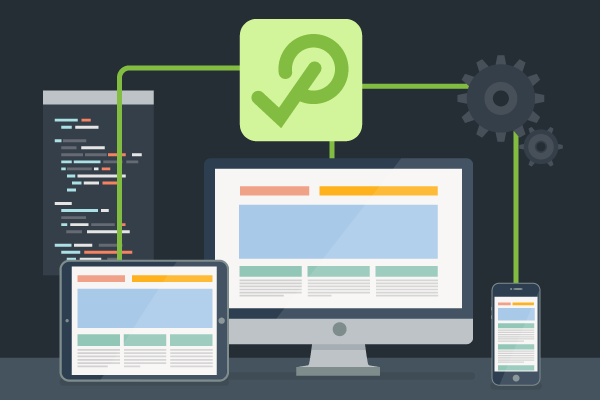In software development, shift left is a practice that helps developers identify and fix vulnerabilities and coding errors as early as practical in the software development lifecycle. And the sooner a developer finds and fixes a software defect or vulnerability, the faster, easier, less complex, and less error-prone (and therefore, less expensive) it is for them to do so. That’s because the developer’s intention is still top of mind, so they can fix code quickly before others have a chance to add more code and introduce more dependencies later in the process that make fixes more complex.
Shifting to the left of the linear development timeline (as opposed to the right, or after the product has been released to end users) can make fixing errors more manageable, improve product quality, increase efficiency, ensure compliance to standards, and reduce time-to-market.
There are many tools, technologies, and solutions that enable development teams to adopt a shift-left methodology faster, more accurately, and at scale. This guide will explain the many types of shift-left tools, their use cases, and the benefits of shifting left.
Table of Contents
- Shift Left for Continuous Testing
- Shift Left for Test Management
- Shift Left for Continuous Security
- Shift Left for Development at Scale
Shift Left for Continuous Testing
The world of web and mobile app testing is constantly in the pursuit of saving time, money, and other valuable resources. For some, they may feel stuck with a legacy testing platform that is sluggish and mired in bottlenecks. These types of platforms are often one of the biggest hindrances to shifting testing left. To help ease what may feel like a daunting task of switching platforms, agile testing solutions like BlazeMeter offer free script conversion tools to make the transition easier.
The future of testing is shifting left with continuous testing. Shifting mainframe testing left, for example, results in higher code quality with fewer errors, is ideal for frequent releases, features more team collaboration, reduces cost, and creates flexibility and automation. In a word? Shifting left means creating efficiency.
When we think of shifting testing to the left, it is with the intention of making a testing strategy nimbler and more flexible. Having an agile testing strategy creates increased customer satisfaction by delivering and testing the app frequently and actioning on a continuous feedback loop. Once organizations adopt an agile testing strategy that shifts their testing left, the benefits are immediate and numerous.
Don’t just take our word for it, though. You can learn more about why organizations are seeking out more modern, agile-focused continuous testing alternatives or see for yourself with a demo of how you can go from a slow, monolithic testing platform to an agile, continuous testing platform that will help you shift left.
Learn more about the benefits of continuous testing >>
Continuous Testing for Quality Applications
When it comes to creating quality applications, user experience is key. An app that contains bugs or glitches or even slow loading times will not be tolerated by today’s users. The only way to ensure an ideal user experience is to test your applications early and often by adopting a shift-left software testing strategy.
When developing a shift-left software testing strategy, there are several components to consider. Testing and development teams should utilize a testing maturity model to determine where in their testing process steps and methods can be improved upon. If bugs and glitches do arise, testing teams will need to consider bug severity vs. priority to determine the best course of action. POC in testing helps testing teams determine whether a prospective test automation solution is effective. When combined, these agile testing strategies will provide a solid foundation for performing the many types of software testing that make up a successful shift-left testing strategy.
Learn more about embracing shift-left testing >>
Non-functional testing is another important component of a shift-left testing strategy. Non-functional testing verifies the way that software applications work and how well they work. There are several types of non-functional tests, including performance testing, load testing, stress testing, usability testing, and more. With the onset of AI and ML, it is also important for teams to embrace automation as part of their shift-left testing strategy.
Software testing is a crucial part of application development, and a well-planned software testing strategy can help to identify and fix defects early on, allowing teams to easily shift left. Before releasing an application onto the market, testing and dev teams must ensure the app is release ready by adopting a testing platform that embraces shift-left testing, like Perfecto.
Shift Left for Test Management
To implement shift-left testing effectively, testing and dev teams need to start with a thorough test plan. The test plan serves as a shared blueprint that keeps everyone on the same page regarding the scope, strategy, schedule, and resources for all of your testing. Aligning all testers and stakeholders on testing processes and procedures will ensure that all testing — including shift-left testing — is performed consistently and at the right time. Using a dedicated, holistic test case management tool like Helix ALM makes it easy to keep teams aligned across all types of testing.
For organizations that follow an agile (or hybrid agile) development process, it makes sense to adopt an agile testing methodology. Similar to agile development, which breaks down monolithic development into smaller user stories, agile testing breaks down larger testing elements into smaller, more specific tests. And just as the agile methodology takes an incremental approach to development, agile testing happens incrementally and continuously as new functionality and features are added. As testing shifts left, bugs and issues can be identified earlier and resolved faster. That means better test coverage, which results in higher quality products.
As teams shift testing earlier, it’s important to maintain thorough documentation of all test cases and results, and to trace test results back to requirements to ensure they have been met as defined. Documentation is particularly critical for companies in regulated industries that need this traceability to prove compliance. Helix ALM automates traceability across the entire development process, from requirements, through all types of testing, bug tracking, and issue resolution. This continuous traceability makes passing audits a breeze, no matter when they occur.
Shift Left for Continuous Security
For DevSecOps teams, building in security from the start of development is an essential best practice that safeguards software throughout the software development lifecycle (SDLC) —without slowing down development. A security-first approach to development begins with shift-left security.
QA: What Is Shift-Left Security?
Shift left is a practice that helps developers detect vulnerabilities and coding errors as early as practical in the software development lifecycle (SDLC), so taking a shift-left approach to security focuses on security checking or security-related tasks early.
Shifting security to the left of the development timeline helps DevSecOps teams avoid delays downstream, because it allows you to uncover potential security risks in the code — long before the software is released. Catching errors early in development is crucial for embedded software industries with mission-critical projects.
To help you identify and fix errors as you code, Static Analysis tools like Helix QAC and Klocwork offer automated security testing to analyze risk and prioritize risk severity; verify code compliance with secure coding standards and industry best practices; and provide control, collaboration, and reporting for the entire enterprise.
Klocwork provides capabilities for feature-branch Streams and for staged pipelines to create fully automated Quality Gates that provide fast, continuous compliance, by using a shift-left approach to help keep vulnerable and otherwise inferior code out of version control to begin with.
Learn more about shift-left security and vulnerability detection for embedded systems in this webinar >>
Depending on the industry, embedded software projects with large codebases and complex systems may require careful code review to ensure software and applications are protected from ever-present and increasingly sophisticated security threats. Industries such as automotive, medical technology, aerospace and defense, and energy technology must meet rigorous industry regulations and secure coding standards compliance to ensure not just the security of their products, but also the safety and quality of the software. Shifting testing and security to the left enables developers to find and address issues before the code is released into production.

See how automotive professionals are shifting left in our State of Automotive Development Report >>
Shift Left with Secure Coding Standards
Secure coding best practices empower developers to write software that’s protected from vulnerabilities. In the interest of shifting left for continuous security, it’s important to incorporate secure coding practices throughout the planning and development of your product. One way to do this is to use secure coding standards such as CWE, CERT, CVE, DISA STIGs, and OWASP. Secure coding standards are rules and guidelines that, when used effectively, help you defend your software against cybersecurity threats. A SAST tool is the best way to ensure secure coding and enforce secure coding standards rules.
How Static Analysis Automates Agile Development
The flexible and iterative nature of the Agile methodology means that you can reduce security vulnerabilities early as they occur, without impacting your project timeline. Static analysis supports Agile development by automating code review and reporting on what coding vulnerabilities are being found and fixed, ensuring the continuous security of your software applications. Using static analysis tools like Helix QAC and Klocwork, as well as Perforce Validate: The Continuous Security and Code Compliance Platform, security checking can easily be integrated into your existing CI/CD pipeline for continuous development.
Shift Left for Development at Scale
Shifting left for development at scale involves applying the shift-left principle to complex software development projects. Organizations that do large-scale software development often have multiple teams whose projects have many dependencies. For teams like these, it is imperative to integrate testing and QA earlier in the development process, before an issue has the chance to percolate down throughout the organization’s projects and cause costly delays.
Large organizations developing at scale often use parallel development methodologies. One example of shifting left in large-scale development is the use of a version control system, like Perforce Helix Core, with a CI build runner, like Jenkins. Code is developed in parallel, and code changes are managed with Streams, the branching mechanism in Helix Core that allows development teams to automate workflows with pre-defined, controlled branch/merge patterns. It gets tested pre-integration, then goes into the CI build, is integrated, and tested again. By automating development and testing procedures, version control and CI build runners ensure consistency and accelerate the development lifecycle.
Shift Left Software & Tools from Perforce
Perforce Software solutions can accelerate development in your organization by shifting testing and security to the left of the development timeline, enabling you to increase efficiency and ensure product quality — and, more importantly, free up your talented team to do the work they do best (instead of cleaning up the everyday mess).
Combined use of two or more Perforce solutions creates a development environment that’s both symbiotic and synergistic — creating exponential value to a development team. For example, issues found in Klocwork can be exported directly into Helix Swarm so that reviewers have visibility into those remaining issues, when and where they most need to see them. Issues found in Klocwork can also be exported directly into Helix ALM to be tracked and managed over the application lifecycle.
Check out how the tools we’ve mentioned in this guide can help you shift left and build, test, maintain, and grow your development projects with less manual effort.


